Education in Costa Rica is divided into 4 main levels -pre-school, primary, secondary, and higher-. Similar to other countries, a Costa Rican education can become challenging to it’s students, and they have the opportunity to get help from the best assignment service anytime. The education system is important and legally Article 78 of the Political Constitution of the country determines that:
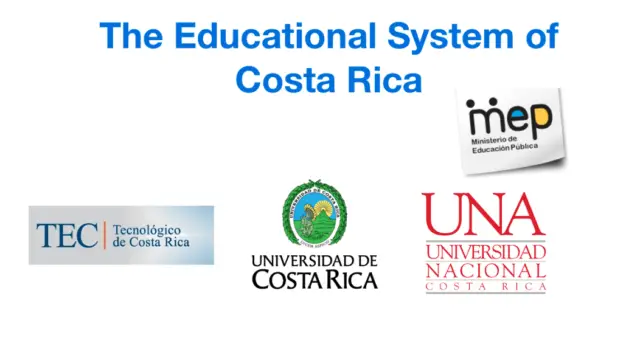
Preschool and general basic education levels are compulsory. These and the diversified education in the public system are free and paid for by the Nation.
The entity in charge of supervising, regulating, and modifying the education system is the Ministry of Public Education. Educational coverage is high: primary education is totally universal, while secondary education covers more than 70%.
In this regard, the Costa Rican education system is recognized as one of the best in the Americas, being Costa Rica the holder of one of the highest rates of literacy, educational coverage, and public spending in education in Latin America and the best in Central America. Likewise, there has been a solid public higher education system since the 20th century, which has become one of the best in Latin America and the most developed in Central America.
In 2011, there were about 844,827 students in the 1st, 2nd, 3rd cycle and diversified education, as well as 46,559 teachers. In the physical space, there are 4,370 schools and colleges.
Since colonial times, education in Costa Rica consisted mainly of religious and political aspects. However, the ideas of the Renaissance, the Enlightenment, the Positivism, and the French Revolution changed the course of Costa Rican education. At the beginning, education was only accessible to Creoles and aboriginals.
The 1st teacher in the history of Costa Rican education was Father Diego Aguilar, who ran the 1st elementary school and worked at it for more than 40 years. The Spanish Crown ordered, in the 17th century, the creation of schools in each province of the Central American Republic for the literacy of the children. A century later, the Municipalities of Cartago, San José and Heredia complied with the provisions of the Spanish crown and hired dozens of teachers who were often Catholic priests.
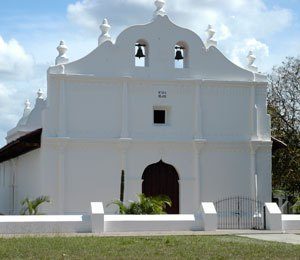
At the end of the 18th century and beginning of the 19th century, education was limited to teaching the most basic and there was no secondary school or university. Therefore, the students had to travel to the universities of León, Nicaragua, at the San Ramón School, of that city and many continued at the University of San Carlos Borromeo of Guatemala.
Dr. Florencio del Castillo, representative of Costa Rica in the Cortes of Cádiz, played a key role in Costa Rican education, as one of his achievements was the creation of schools to teach reading, writing, and counting to indigenous children. As a consequence of the achievement of del Castillo, the House of Teaching of Santo Tomás was created in 1814 teaching Philosophy, Sacred Canons, Moral Theology, among others.
This is how the Costa Rican education system kept evolving constantly throughout the 19th and 20th centuries, with successive reforms such as: the right to education for women in an education system focused on males, the declaration in 1844 that the Education is a right of Costa Ricans, and the State guarantees it in all concepts by means of legal provisions or the creation of the Secretariat of Public Instruction in 1869, which was the 1st educational regulator in the country.
Levels
The Costa Rican education system is divided into 4 levels: preschool, primary, secondary, and higher. In the country, there is Basic General Education, which is compulsory and free of charge, consisting of 6 years of primary school and 3 years of secondary school.
Early education
Initial Education
Initial or preschool education is the educational service provided to girls and boys under six years of age, with the purpose of enhancing their integral and harmonious development, in an environment rich in formative, educational, and emotional experiences, which will allow them to acquire skills, habits, values, as well as develop their autonomy, creativity, and attitudes necessary in their personal and social performance.
Basic Education
Metallic Building in San José, headquarters of the Buenaventura Corrales School, one of the most representative schools in the city.
Basic General Education (EGB) covers primary education and half of secondary education. From 6 years and 6 months, this stage begins and extends for 6 years in schools to continue for another 3 years in secondary education.
Primary education
The children, after finishing the Initial Education, continue in the primary school for a period of 6 years. In case they do not fail in any year, they leave school at an average age of 12 or 13 years. In Costa Rica, the first 2 years of the primary school consists of teaching the child the basics of everyday life, such as reading, writing, and counting. From the 3rd grade of primary school, a little more advanced teaching begins with more global subjects such as national history and other more advanced aspects.
Secondary education
It starts, on average, at 12 or 13 years old, if the student does not fail any year in elementary school. At the end of secondary education, it is intended that the student develops sufficient skills, values, and attitudes to perform a good role in society. At the end of high school, students are expected to go out prepared for college, thinking about who they want to be and giving them enough tools to continue their studies. Half of the years of high school education in Costa Rica belong to the 3rd cycle of Basic General Education (from 7th to 9th grade); the rest belongs to Diversified Education.
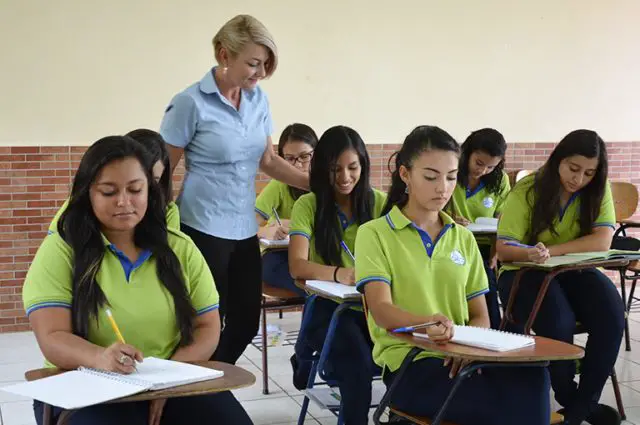
Diversified Education
The Diversified Education cycle constitutes the last 2 or 3 years of secondary school. The Costa Rican State no longer considers it mandatory, but it is free. It starts, normally, at the age of 16, if the student has not failed any previous level, and consists of comprehensive preparation in order to take the standardized tests of the National Baccalaureate, an academic requirement to access higher education.
Modalities
When entering Diversified Education, there are several institutions in various institutions that have different duration and a diverse pedagogical approach. The most common module throughout the country is the Academic Education, which consists of 2 years. It provides teaching with a scientific-humanist framework, in Science and Letters.
In addition, there is also an important proliferation of the modality of Professional-Technical Education, with longer duration (3-years) and that grants a technical-medium license to practice a specialized career. The offer of technical specializations presents a great variety of the different institutions of the country, according to the environment and the labor needs of the community. Similarly, at some educational centers, the International Baccalaureate (IB) program is taught. This consists of extending the staying at the educational center for a period of 2 years, with the possibility of studying at a foreign university.
Moreover, there are other alternative modules, with a variable duration, and a minority presence in the national secondary offer. Among them, we can mention the following:
Environmental Education, Artistic Education, Scientific Education, Sports Education, Experimental Bilingual Education, Innovation Education, and Technological Education.
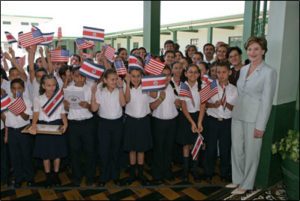
University education
After graduating from college, the student can enter a university. In Costa Rica, the 1st university degree is called “baccalaureate”, the same as the degree with which you graduate from school or secondary. This creates confusion, so people should specify if they are referring to the college or university title.
The baccalaureate is a 4-year program (similar to the bachelor’s degree from a university of German-Anglo-Saxon tradition). After the university baccalaureate, the student can opt for a bachelor’s degree, which usually corresponds to 3 semesters, including a thesis.
There are 5 public universities in Costa Rica, which are:
Technological Institute of Costa Rica (TEC): A house of higher education founded on June 10th, 1971, and which is the main university in the country in the area of Engineering.
University of Costa Rica (UCR): It is the main, largest, and oldest Costa Rican university. It is also one of the best and most prestigious institutions of higher education in Latin America and the best in Central America and the Caribbean.
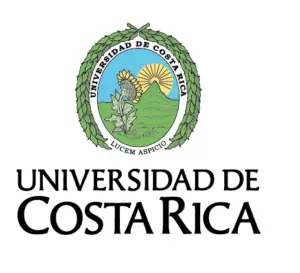
National University (UNA): It was founded in 1973. It is the 2nd most important university in the nation and is also one of the most prestigious in Latin America.
National Technical University (UTN): Constitutes the institution of higher education of more recent creation in the country, it was founded on June 4, 2008, after the merger of other educational centers.
Distance State University (UNED): It was founded in 1977, and is the 2nd university in the country in terms of a number of students. Its educational program is remote, so the student can study at home and make an assessment per month.
As well as there are more than 50 private universities, most of them have few operating times due to the lack of adequate financial means and physical plants of fortune that promote a high-quality higher education.
There are also “institutes” that offer technical training in different trades, but this does not correspond to a university level. An example of it is the National Apprenticeship Institute (INA), which has offices in different parts of the country.
On the other hand, higher education in Costa Rica is divided into several levels:
Undergraduate: Diploma and Teaching Staff
Degree: Bachelor and Bachelor
Postgraduate: Specialty, Master, and Doctorate
Academic degrees
The academic degrees present variability, depending on whether the institution is public or private. Even so, the Ministry of Public Education establishes the following levels and the students’ average ages at the corresponding degree:
Initial
Maternal: 4-5; Kinder: 5-6
Primary
1st grade: 6-7; 2nd grade: 7-8; 3rd grade: 8-9; 4th grade: 9-10; 5th grade: 10-11; 6th grade: 11-12
High school
7th year: 12-13; 8th year: 13-14; 9th year: 14-15; 10th year: 15-16; 11th year: 16-17; 12th year (only in some modalities): 17-18
Higher
Undergraduate (variable age)
Graduate (variable age)
Postgraduate (variable age)
Costa Rica and its leaders have understood the need for education at all levels, as education allows citizens to choose better positions and progress to give a better quality of life to their families and their environment.
Since education is considered as a source that allows adding value to people, it does not matter where you work; it can be in the rural area, at the factory or the office, or even at junior/senior management positions.
In other words, the more educated they are, the better they will be their performance. Therefore, their attention will be much more cordial and enjoyable to the public they work for.
In short, education is the main tool for the development and wellness of peoples.
